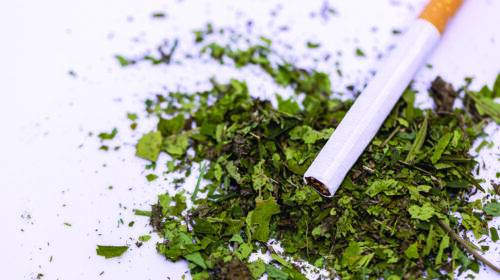Are you looking to grow autoflowering seeds but struggling to optimize their growth and yield? One key factor that can greatly impact the success of your harvest is the light schedule. Unlike traditional cannabis plants, autoflowers have a unique growth cycle that requires a specific type of lighting regimen. In this blog post, we’ll explore everything you need to know about creating the perfect light schedule for your autoflowering seeds so that you can achieve optimal results and enjoy a bountiful harvest. Let’s get started!
Introduction to Autoflowering Seeds
Autoflowering seeds have gained popularity among cannabis growers due to their unique characteristics. Unlike regular cannabis seeds, autoflowering seeds are designed to flower automatically without any need for a change in light schedule. This means that you can grow them all year round, regardless of the season or climate.
The autoflowering genetic traits come from the Ruderalis plant species which is native to Russia and Central Asia. It has evolved over time to adapt to its harsh environment by developing an auto-flowering trait that helps it survive in short summers with long hours of daylight.
Autoflowering strains are also ideal for those who want fast results since they take less time than photoperiod plants. They typically mature within 8-10 weeks, compared to traditional strains which can take up to 6 months.
Moreover, autoflowers do not require complex lighting schedules like photoperiod plants. In fact, some growers even use a simple 18/6 light cycle throughout the entire growing process with great success.
If you’re looking for an easy-to-grow strain that produces quick yields and doesn’t require much attention or expertise then autoflowering seeds might be right up your alley!
The Light Schedule for Autoflowering Seeds
Autoflowering seeds are a popular choice for many growers due to their fast-growing nature and ease of cultivation. However, optimizing the light schedule for autoflowering seeds is crucial to ensure maximum growth and yield.
Unlike photoperiod plants, autoflowering plants do not rely on changes in light cycles to initiate flowering. Instead, they will automatically start blooming after a certain amount of time from seedling stage. Therefore, it’s important to provide them with consistent lighting throughout their growth cycle.
During the vegetative stage (the first few weeks), autoflowering plants require around 18-24 hours of light per day. This prolonged exposure helps promote rapid growth and development while minimizing stress.
Once the plant has entered its flowering stage (around week 4-6), you should reduce the daily light hours to 12 hours on and 12 hours off. This mimics natural sunlight patterns during autumn when days become shorter and encourages bud formation.
It’s worth noting that some growers prefer gradually reducing the daily light period instead of abruptly switching from 18-24 hour periods to 12/12 cycles.
Finding the right balance between lighting intensity and duration can greatly impact your autoflowering seed’s overall health, size, potency and yield potential.
How to Optimize the Growth of Autoflowering Seeds
Autoflowering seeds are a great option for beginners and experienced growers alike, thanks to their automatic flowering cycle. However, optimizing the growth of these plants can be tricky without the right approach.
Firstly, it’s essential to choose a suitable growing medium for your autoflowering seeds. Soil is often preferred due to its natural nutrient content and ease of use. If you opt for soil, ensure that it has adequate drainage to prevent root rot.
Secondly, provide your plants with enough light during their vegetative stage. A minimum of 18 hours of light per day is recommended until they start to flower. LED lights are an excellent option as they emit little heat and consume less energy than other types of grow lights.
Another aspect to consider when optimizing growth is temperature control in your grow room or tent. Autoflowering strains prefer temperatures between 70-80 degrees Fahrenheit during the day and slightly cooler at night.
Regular watering and feeding with high-quality nutrients will help promote healthy growth in your autoflowering seeds.
By following these tips on how to optimize the growth of autoflowering seeds, you can ensure that your plants develop strong roots, healthy foliage and produce bountiful yields!
How to Maximize the Yield of Autoflowering Seeds
Autoflowering seeds have become popular among growers because of their fast and easy-to-grow nature. However, maximizing the yield of autoflowering seeds can be a challenge for many growers. Here are some tips on how to maximize your yield:
1. Choose the right strain: Selecting the right strain is critical in ensuring that you get high yields from your autoflowering plants. Always choose strains with high-yielding genetics.
2. Provide adequate light: Autoflowering plants require at least 18 hours of light per day to grow optimally and produce maximum yields. Ensure that you provide them with sufficient lighting throughout their life cycle.
3. Use quality soil or nutrient-rich hydroponic system: The growing medium plays an essential role in plant growth and yield production; hence it’s crucial to use quality soil or nutrient-rich hydroponic systems.
4. Maintain proper temperature and humidity levels: Autoflowering plants thrive in warm temperatures between 20-30°C and moderate humidity levels around 40-50%. Maintaining optimal environmental conditions ensures maximum yield production.
5. Prune regularly: Regular pruning helps increase air circulation, allowing more nutrients to reach the buds, which leads to increased growth rates, resulting in higher yields.
By following these simple steps above, you can optimize your plant’s growth rate while maximizing its potential for yielding large harvests full of dense buds!
Conclusion
Optimizing the light schedule for autoflowering seeds is crucial to ensure that they grow and yield well. As discussed in this article, providing a consistent 18/6 or 20/4 light cycle during the vegetative stage and gradually reducing it to 12/12 during the flowering stage can help maximize their growth and yield.
It’s also essential to provide high-quality LED grow lights that emit a full spectrum of light, as well as ensuring proper ventilation and humidity levels in your growing environment. With these factors in mind, you’ll be on your way to successfully growing healthy autoflowering plants with optimal yields.
Remember that different strains may have slightly different lighting requirements, so experimentation is always key. By taking note of how your plants respond to changes in light schedules and adjusting accordingly, you can fine-tune your approach until you find what works best for each specific strain.
By paying attention to lighting schedules and other environmental factors crucial for plant growth, you’re sure to enjoy abundant harvests of high-quality autoflowering buds.



